8 Ways to Use a Tablet at a Tradeshow: Video
Tablets can be used in a large variety of ways in your tradeshow booth. Here are just a few. Maybe you can think of more!
Tablets can be used in a large variety of ways in your tradeshow booth. Here are just a few. Maybe you can think of more!
No, things don’t always go wrong when exhibiting at a tradeshow, but when they do, it can throw you and your team for a loop. The best way to deal with what happens when things go wrong is plan for them to go wrong.
Obviously, you can’t game out every scenario. But you can at least anticipate a few things, right?
One way to see what things might possibly go wrong is to read Exhibitor Magazine’s Plan B column, a monthly ‘you-are-there’ description of actual events where things went wrong. Sometimes terribly. But you get to see the creative ways in which people dealt with an unexpected circumstance.
What are some of the things that can go wrong? How about a missing shipment, where only part of your exhibit shows up? Or new graphics are printed but you haven’t had a chance to review them or test them on the exhibit frame because, you know, timing? Or finding out that your booth space wasn’t where it was supposed to be and wasn’t as big as planned.
Frankly, a million things can go wrong and the hardest part of dealing with something unexpected is that you’re in an unfamiliar place. And you may be setting up on a weekend, or in a different time zone and you can’t reach the people you normally would rely on.
And of course, the time crunch of making things happen in short order because the show will open on time whether you’re ready or not.
A few things that I believe can make a difference: knowing who to call. Knowing your vendors or shippers on a first name basis. Having cell phone numbers of critical people who can make things happen quickly, like printers, exhibit makers and more.
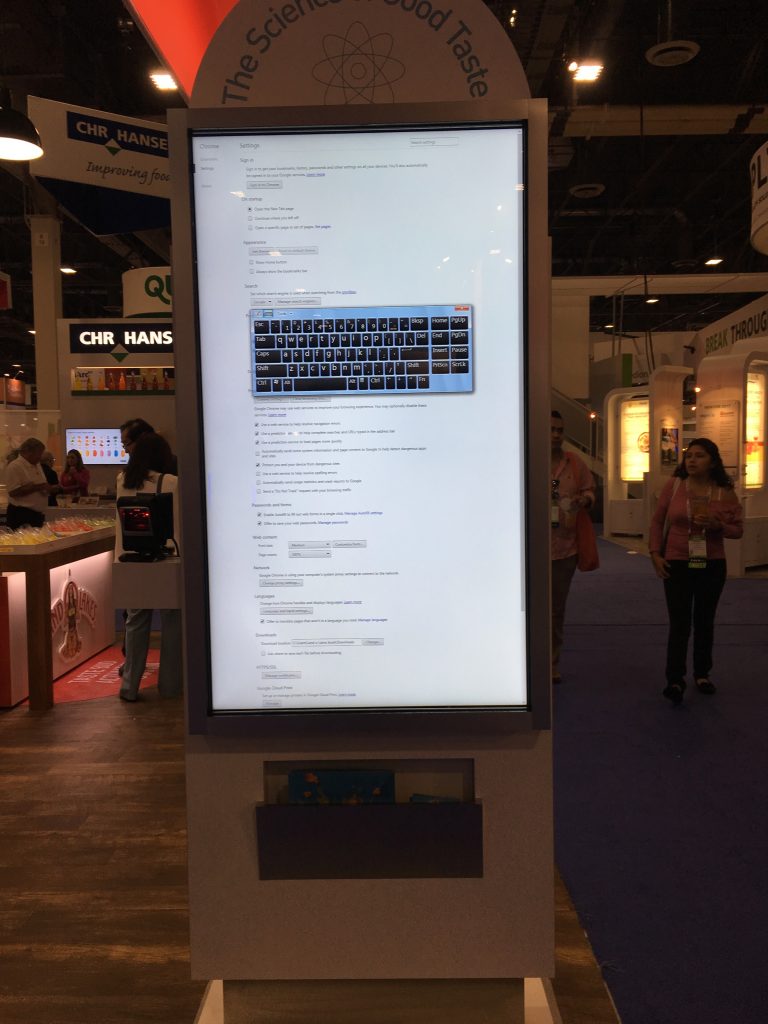
Another common denominator is that most of the problems take place early on during setup, which means making sure all of your vendors are on alert for anything from late night phone calls to early morning emails to deal with situations that arise.
One way to head off potential problems is to get ahead of the game as much as possible. Get graphics designed sooner than you might normally plan. Get them produced and fitted ahead of time. Set up the exhibit prior to packing it for shipping to make sure all pieces are there and still fit; we all know that exhibits are packed away quickly and that some things get broken or bent or torn and no one will notice until it’s too late. Which means that one of the best things you can do is go through your exhibit crates on a slow day shortly after they return from the show. It’ll give you a chance to take the time to confirm that all is as it should be or uncover potential issues way before you’re under a time crunch.
Bottom line: be as prepared as possible before things ship and have contact info for all of the players at your disposal (and have a full-charged phone or a portable power pack!). And if all of those plans don’t head off a problem, work with the creative people in your setup crew and booth staff. Putting heads together instead of trying to solve everything on your own is probably the best way to work your way through a difficult and stressful unexpected problem.
What’s in a book? In many cases, the right book can take you to another world, to help you momentarily escape this world. In the world of business, a good book can open up your mind to other possibilities and show you things that you might not have even considered before. This week’s TradeshowGuy Monday Morning Coffee examines a half dozen books from my personal library that I’ve found more than just useful.
Books mentioned in this week’s vlog/podcast:
This week’s ONE GOOD THING:
ddstudio Dual Driver Bluetooth Earbuds:
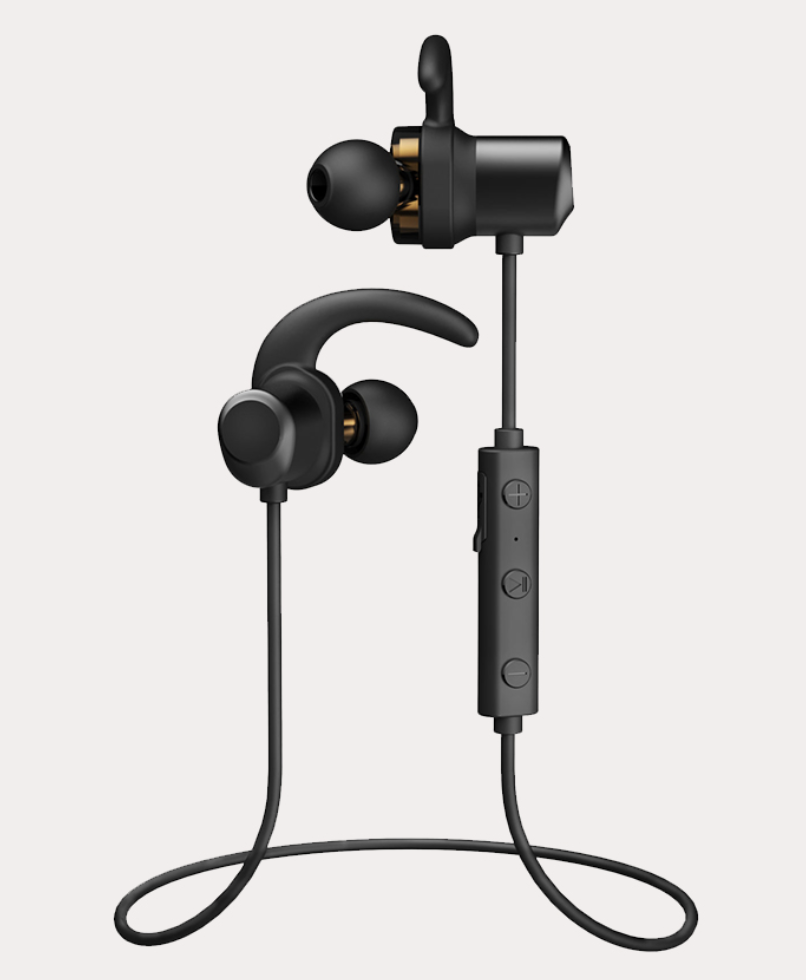
Let’s break it down into a handful of easy steps. It starts with gathering the right information at the tradeshow and then making a seamless handoff of all of that information:
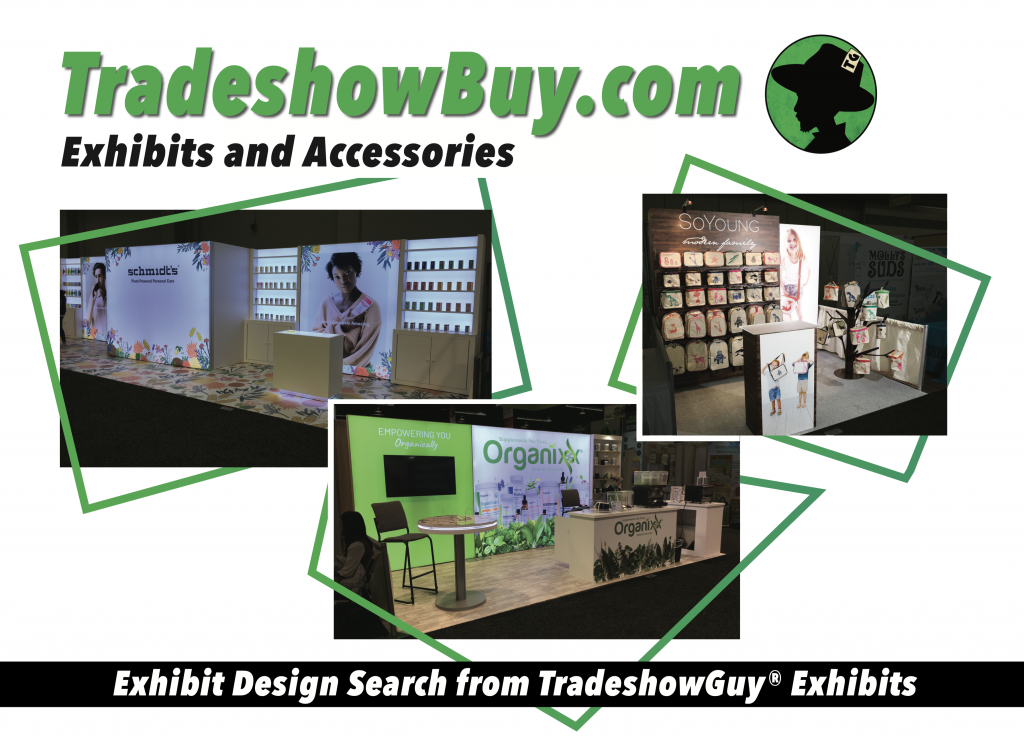
Now that most companies haven’t exhibited at a major show in the US for nine months or so, where does that leave their marketing efforts? I’ve heard some companies badly miss shows because that’s where a large portion of their lead generation came from and without that they’re struggling to generate as many solid leads. Some companies have shifted to other marketing outlets and been at least moderately successful, and I suppose some companies have even determined that they don’t really need tradeshows.
It’s my impression that there’s always been a bit of perception from many management and sales staff that tradeshows are a grind, a big waste of money and time. That they only attend because their competition is there but if they could they’d bail on exhibiting or even attending shows.
Meanwhile, tradeshow managers are buried in details of exhibiting and logistics and new product launches and are-there-enough-samples and so on.
By the time bigger shows return, it’s likely that at least a year will have passed for many exhibitors since their last appearance at a national or international show, and the question is undoubtedly being asked: are tradeshows still even that important?
That question can only be answered by each company individually based on their own goals, budget and personnel.

One result might be that companies will exhibit at fewer shows. If that’s the case, the focus on the shows should be to make sure that exhibiting is worth their time. Maybe you’ll have the same budget but with fewer shows, you can concentrate on those select handful of shows and make sure you carefully and completely execute all of the tradeshow marketing steps from A to Z to ensure great results.
Another consequence of the coming post-COVID world may mean smaller budgets, which means downsizing your exhibit, or renting an exhibit save a few dollars. Or taking fewer people to shows.
One other change that I believe will be a result of no tradeshows for a year or so: the psychological effect on both exhibitors and attendees. How will we feel, for instance, about shaking hands with people we meet, or hugging old friends that we haven’t seen for a year or two or three? How will food companies hand out samples so that everyone who is picking up a tasty sample is comfortable with it? Will we really feel okay flying across the country to attend a show, stuck in an airplane for hours with strangers? Some will be okay; others may have high levels of anxiety. It’s likely that aisles will be wider, giving more separation between booths and giving attendees more space to keep people at a distant.
Things will change, things are already changing.
I think we’re just seeing the tip of the iceberg.
Building software to host a virtual event poses a million questions, many of them hoping to address the user experience. And the exhibitor experience. How to keep people engaged, how to keep them from being bored, how to have conversations, how to connect, how to give keynotes. And so on. I recently caught up with Sandy Hammer, co-founder of AllSeated, which has recently launched virtual event software that looks, well, impressive. She and I sat down to talk about it, and to give her a chance to show us a little bit about how it works:
Check out AllSeated.com. And I just noticed that David Adler will be giving a keynote on Thursday, January 7th with AllSeated and the virtual event software exVo. More info here.
This week’s ONE GOOD THING: The Voyager Golden Record (the NASA site) and the package from Ozma Records.
The week between Christmas and New Year’s has, for me, been sort of a respite from the rest of the year’s calendar. Since the early aughts when I was VP of Sales and Marketing at Interpretive Exhibits here in Salem, the owner would generally close the business down. Most of our clients at the time I joined the company were from the government or nonprofit world, and as he put it, “they tend to shut down for a couple of weeks at this time of year.” He said that I could continue to work, but the office would generally be closed. After the first year at the company, I usually scheduled a week of vacation at the end of the year. I figured, why not, the company is closed, and I can get some extra time in skiing! And if clients wanted something, it was easy enough to monitor email communication remotely.
It’s different this year. Of course. 2020 is as different from a normal year as can possibly be. Most of the tradeshow world is not happening. Exhibitors are not planning shows, organizers are not putting final details on booth sales, exhibit designers and builders are mostly limping along. Exhibitor Magazine’s mid-November webinar reporting from the tradeshow world showed that more than half of exhibitors and builders expected their income in 2021 Q1 to decline.
And with no tradeshow business, I’ve taken to delivering for Uber Eats about half time. It’s not a bad gig, as the gig economy goes. It’s temporary, it pays all right, and there’s something noble about bring food to people (maybe that’s why I’ve always fallen for waitresses – seeing someone bringing you a plateful of food is great!).
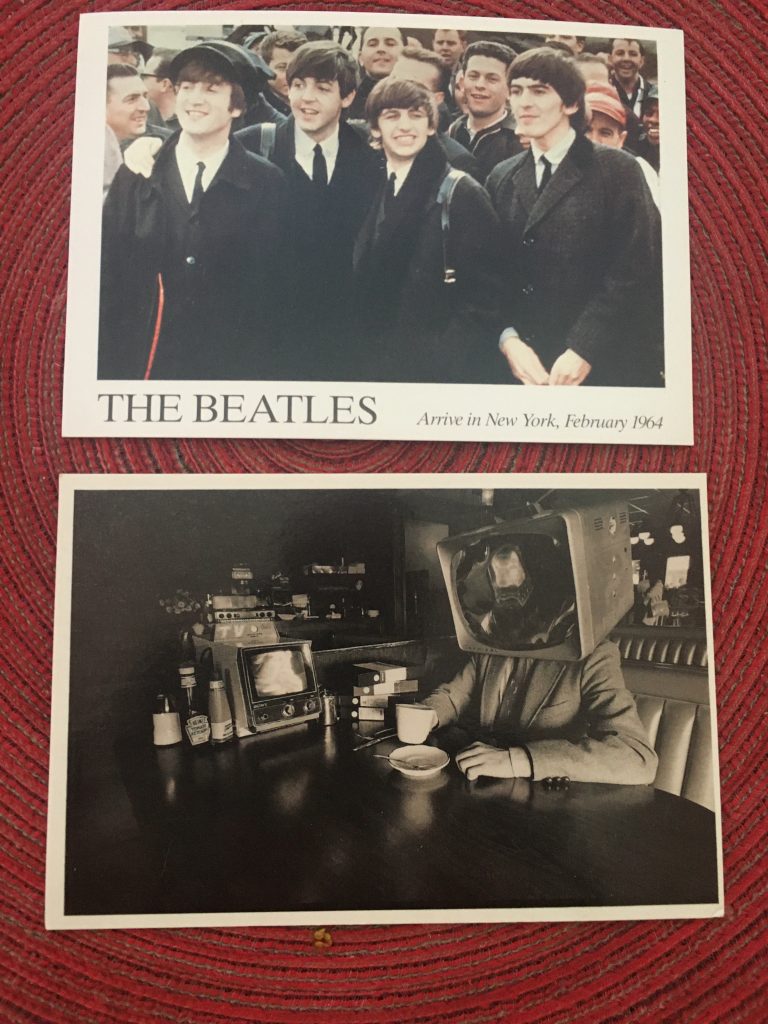
So, I’m taking it easy this week. I’ll get an extra day or two in on the slopes. I’ll write extra-long on my novel (third go-round of the manuscript) because I’m almost finished. I’ll watch the Blazers and Seahawks on TV as they play in front of empty bleachers, which has got to be one of the weirdest consequences of COVID. I’ll reach out to friends more often (I’ve sent a couple of dozen postcards to random friends in the past several months, because, hey, who sends postcards anymore, right?). I’ll listen to music (the new Paul McCartney is pretty cool).
What I won’t be doing is counting the days until everything gets back to normal in the tradeshow world. I don’t think that normal is coming back. I think NOW is the normal. It’ll slowly evolve, but virtual shows and Zoom meetings are going nowhere soon, and even when live shows return, virtual gatherings will be a part of our world from here on out.
I’ll continue to reach out to prospects and clients and support them in whatever way I can, and let them know that while we’re dormant, we’re not going anywhere.
We will come out the other side. And I think we’ll be stronger for it.
See you in 2021!
When I first speak with a new client about what they want in a new tradeshow exhibit, it usually comes down to one of two approaches. Either they want to start from scratch, in a sense, and have a good idea of the potential layout and scope of the exhibit, and they have a budget number in mind. Or, and this is the other extreme, they want to pick out a kit from our catalog and make do, mainly to save budget dollars.
There’s nothing wrong with either approach. Every company has a different agenda when it comes to a new exhibit.
The former approach means everything is custom from the git-go. A designer is brought in, conversations are had about brand attributes and guidelines, and the designer is basically turned loose. These are typically the bigger budget projects where, from the start, the designer is encouraged to cut loose, to try several approaches and show a number of structures with different traffic flow patterns, demo areas, meeting areas and so on. From that, the client decides on one (or two) that work best for them, and the design is refined until it’s ready.
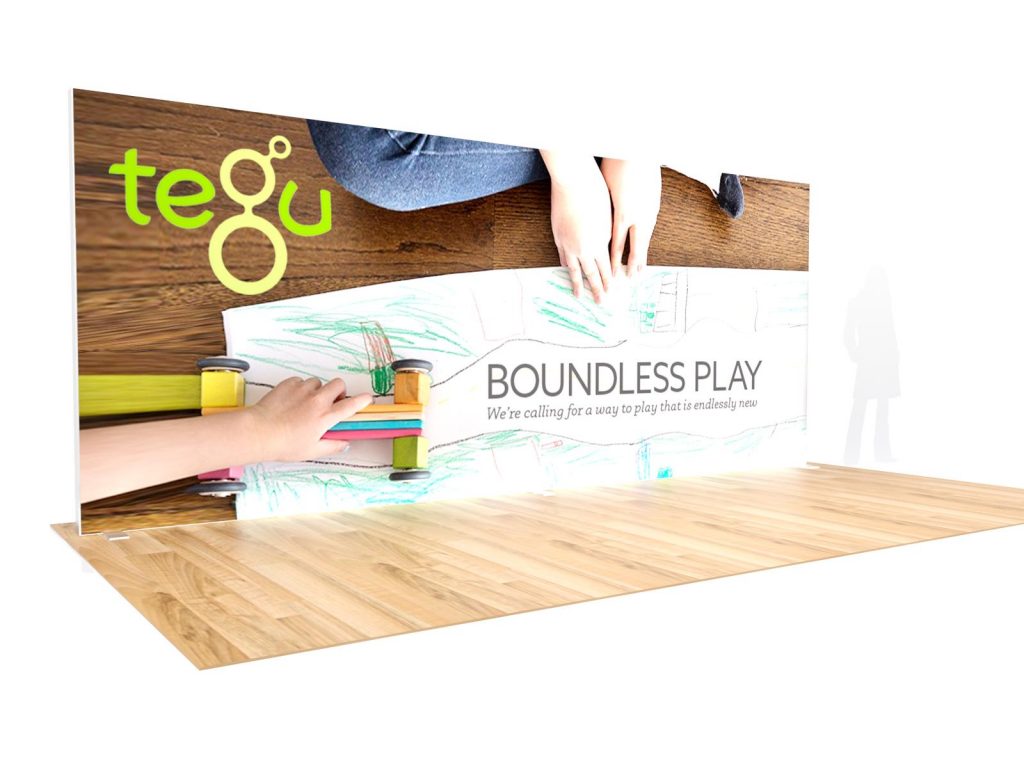
The other approach, where the client is typically working with a more limited budget, starts with a kit from our Exhibit Design Search at TradeshowBuy.com. More often than not, the client believes that the kit as shown in the renderings is the final design.
That rarely happens. Once the conversation starts, the questions begin. Can we add a counter? What about shelves? We need shelves. And something to sit at. And that panel isn’t big enough, what if we made it bigger.
The answers are yes, yes, and yes. Kits get customized, almost all the time. With new clients, there is a bit of a learning curve, but once they realize that even if they start with a kit, that doesn’t mean they’re stuck with everything that’s show. Kits are good starting points to get what clients really want, which is most often a customized version.
A good thing to keep in mind when starting from scratch, especially if your budget is pointing you in the direction of a kit. That kit can be revised, reduced or enlarged in size, configured to fit in more than one final setup (10×10, 10×20, 10×30 for example). Accessories can be added, freestanding graphics or tables can become a part. And those additions don’t have to be out of the catalog, either. Often a client will have custom-built tables that include their logo and additional lighting effects to make them stand out.
If you’re shopping for a new exhibit in 2021 and your budget is pointing you towards something out of a catalog, starting with a kit makes sense. But you don’t have to (and probably won’t) stay there.

Bill Stainton was a guest on this show three years ago, and I wanted to catch up with him to see how he is doing in the midst of the crazy times. We ended up talking about an article from Entrepreneur he had flagged in his latest newsletter that looked at five trends in innovation and how leaders can use them in 2021. It was a lively discussion:
Find Bill Stainton here.
ONE GOOD THING: Ducks win Pac-12 football championship.
Once you return from a tradeshow, it’s easy to want to kick up your feet and relax. After all, you’ve been working hard for months to make the show the best it can be. But before you take a break, do these seven things: